2013 Scion FR-S Review – Video

Squeeze on the throttle at corner exit and the car begins to track out, with just a hint of oversteer. Get greedy and the tail will gently start to rotate. Ease off and the car tucks back in line. It does what you tell it to, no more, no less. The Scion FR-S is a return to the roots of what makes a sports car a sports car.
FAST FACTS
| 1. A direct-injection 2.0L 4-cylinder boxer engine makes 200 hp at 7000 rpm and 151 lb-ft of torque at 6600 rpm. |
| 2. The unique engine makes for an impressive 53/47 weight distribution and a center of gravity that’s lower than even a Porsche Cayman. |
| 3. Compared to the Mazda MX-5, the FR-S is eight inches longer and two inches wider, with 33 more hp and weighing roughly 200 lbs more. |
| 4. The FR-S gets its inspiration from three historical Toyotas: taking design cues from the 2000 GT, using a flat engine like the Sports 800, while applying the many of the principles of the AE86. |
It’s not the raw driving machine many may expect. Its not visceral like a Lotus Elise or as singular in purpose as a Honda S2000, and it won’t beat you up. In fact, it’s quite civilized. It is, however, very much a purist’s car and one that company CEO Akio Toyoda aptly remarked, “rewards proper driving technique.”
A better description of the FR-S, or Toyota 86 as its called in Japan, there isn’t. The antithesis of modern sports cars, Toyota set out to create it as such, purposefully avoiding AWD, turbos, excessive technology and even high grip tires.
Instead, the basic front-engine rear-drive layout, combined with a low center of gravity (due to its flat-4 boxer engine), a limited slip differential and an overall curb weight that comes in around 2,700 lbs are the tools at the disposal of the driver. This can be humbling, but it also makes the FR-S a car where you can’t show up and fake-it at a lapping day. Flaws in your technique will show through immediately and the FR-S challenges you to be a better driver.
Like the Mazda MX-5 Miata, a car the FR-S will be compared to ad nauseum, it’s a momentum car, meaning that with just 200-hp on tap, if you’re going to be fast around a race track, you’ll need to keep your speed up. That’s not as hard as it seems, especially when acceleration feels much more rapid than expected considering the engine output. Even torque feels surprisingly potent, despite just 151 lb-ft of the stuff at a lofty 6600 rpm – suggesting a solid torque curve.
Back to the handling, the FR-S has exceptional steering, although with such a short 101.3-inch wheelbase it responds quickly to inputs, meaning you have to be smooth. After just one corner there is no denying this is a rear-drive car.
A DRIVER’S CAR, FROM THE FIRST DETAIL TO THE LAST
Much in the same way that the car’s layout has been set up for optimum performance, from the driver’s seat, the tools required are also all there. The steering wheel is thick but also incredibly tiny making every input count. At just 365mm, Toyota claims it’s the smallest they’ve ever put in a production car – at least in recent history. The shifter is quite long, although the shifts are incredibly short, with the distance between first and second gear about three inches. It even feels good, weighted perhaps a bit lighter than a MX-5, but with a fluid every-day ease of use much like a Civic Si. Add to this the fact that the pedals are perfectly placed for proper heel-toe downshifts and you’ll find yourself repeating the words “this is a Toyota product?”
That is perhaps a bit generous, as even Toyota will admit that while the concept behind the car is theirs, execution was primarily handled by Subaru – an automaker that one doesn’t have to pull out a history book in order to recall their last awesome performance machine.
Other notable interior features are the seats, which are excellently bolstered, not just on the sides, but at the shoulders as well, and coated in a grippy material to keep you in place.
Located right in front of the shifter are two buttons, one for a sport mode, the other to turn traction and stability control right off. The sport setting is properly unintrusive, letting you even hang the end out a little. Off, by all accounts, is full-off, with no intervention when late in the day rain soaked the course and our test session transformed journalists into amateur drifters.
EVEN THE AUTOMATIC TRANSMISSION IS AMAZING
Sadly, while an enthusiast’s machine and equipped with a 6-speed manual from the factory, offering an automatic transmission is a necessity to make the FR-S a viable business case. As a sign of Toyota’s commitment to the car, when developing an automatic the engineers didn’t just phone it in. Instead they developed a six-speed unit based off the 8-speed automatic in the Lexus IS-F. With a proper steering wheel mounted paddle shifter setup it’s shockingly good. When pressed, the car’s chief engineer Tetsuya Tada wouldn’t give any data on shift times but did say they targeted VW’s DSG dual-clutch system. By all accounts, it’s close, and easily matches the best auto-boxes in the business.
LOWEST CENTER OF GRAVITY OF ANY PRODUTION CAR?
Much has been said about the car’s center of gravity, with reports even attributing Toyota engineers as claiming the car will have the lowest CoG of any production car. That, Tata san admits, is not the case, though for a good reason. In data provided by Toyota, they admitted that both the Porsche GT3 and Ferrari 360, not to mention the Lexus LFA, have a lower weight balance. Those super sports cars had a serious advantage, however, says Tata san with a ground clearance of roughly 110 mm. The FR-S, on the other hand, stands 130 mm off the ground (almost an inch higher), putting it as a serious disadvantage. Could it be lower? Certainly, but Toyota and Scion need it to be a mass production vehicle with all the daily-use needs that that entails.
Those who want a lowered FR-S won’t have to wait long. In fact, they won’t even have to wait for the aftermarket to develop the products, as at launch Scion will offer a selection of parts, including lowering springs and sway bars.
BACK ON TRACK
Initial tests of two right-hand drive models proved pleasing but left us without the wow factor the car’s hype suggested. Those models did, however, give us a chance to get familiar with the track and once behind the wheel of the lone left-hand drive U.S.-spec Scion FR-S turn one hit us like an epiphany. Comfortable enough to actually push the machine, it rewarded; the steering, balance and low center of gravity transforming jaded auto journalist skepticism into the realization that the man in charge at Toyota really does get it.
“Yes,” you’ll scream aloud to yourself inside your racing helmet. “This is it! This is what I’ve been looking for!”
As any proper rear-drive sports car should, the FR-S can be rotated with the throttle. Pinch a corner and induce understeer and a correction is as easy as a dab of gas to point you in the right direction again.
Brake fade was nonexistent during out five lap sessions, though much longer would surely show some wear. The car’s light weight most certainly has something to do with the longevity of the pads.
For all the praise we’ve heaped on it, the FR-S could use more of one thing – grip. The factory tires aren’t high-performance pieces, something Toyota did on purpose, both to keep true to the spirit of the machine, and keep the price tag down. With a set of aftermarket wheels a necessity for many buyers, some UHP tires should be included. Scion will likely offer those at the dealer as well.
Adding to the car’s functionality is a sizeable trunk and fold flat second row seats, which Scion claims leaves enough space to fit a spare set of tires when heading to the track.
If the FR-S is missing anything else, it’s some added aggression, with a subtle aero kit and spoiler high on our list of add-ons. Many will likely say the FR-S needs more power and while more wouldn’t hurt, those folks (the same ones who have probably never driven on a track) are missing the point.
THE VERDICT
The Scion FR-S is a special machine. It’s unique because it’s the world’s only direct-injection flat-four rear-drive sports car, but the reasons go well beyond the facts, to the level of driving enjoyment it delivers.
If there’s any way the FR-S isn’t what we expected it’s in its civility. And to be truthful, any such reputation it has as a rough-around-the-edges track warrior is one the automotive media, and not Toyota (Scion), has created. Rather, it’s comfortable, functional and refined in a way that perhaps only a Toyota can be. Add to this what is expected to be surprisingly good fuel economy and a price well below the $30,000 mark and the car’s appeal is vast.
As Akio Toyoda mentioned, the FR-S rewards a good driver, and is perhaps the best tool we can think of to develop and improve your performance driving skills; or just have a lot of fun regardless of your talent or ambition. Add to that the fact that its light weight and small size mean tires and brakes won’t wear too hard and replacement items won’t cost a fortune and the FR-S is destined to become the track weapon of choice for leagues of driving enthusiasts.
Sometimes it’s hard to know when a car will become an icon. Sometimes it’s not.
Related Reading
2011 Mazda MX-5 Miata Review
2010 Hyundai Genesis Coupe 2.0T
2012 MINI Coupe Review
2011 MazdaSpeed3 Review
2012 Honda Civic Si Review
LOVE IT
- Incredible handling and balance
- Excellent controls: steering, pedals, shifter
- Light weight has lengthy advantages
LEAVE IT
- Low grip tires
- Needs an aero kit and spoiler

With AutoGuide from its launch, Colum previously acted as Editor-in-Chief of Modified Luxury & Exotics magazine where he became a certifiable car snob driving supercars like the Koenigsegg CCX and racing down the autobahn in anything over 500 hp. He has won numerous automotive journalism awards including the Best Video Journalism Award in 2014 and 2015 from the Automotive Journalists Association of Canada (AJAC). Colum founded Geared Content Studios, VerticalScope's in-house branded content division and works to find ways to integrate brands organically into content.
More by Colum Wood

















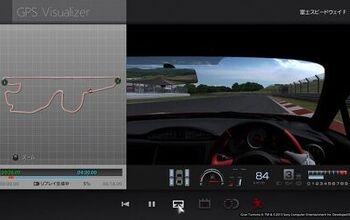


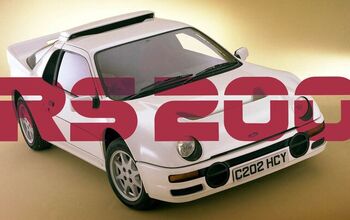
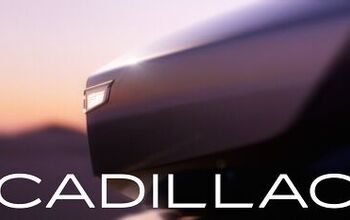


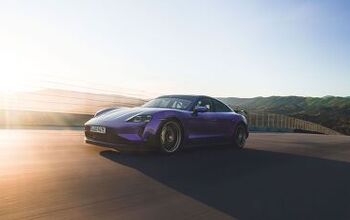





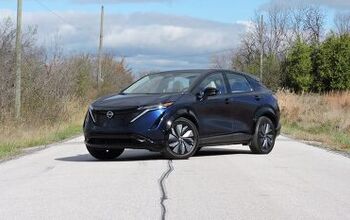
Comments
Join the conversation
I've driven the FRS for a month or so, it run around 9.1L/100km without driving in high rpm, not too bad to a 2.0L engine for daily drive. Its handling is sharp like a go-car, and by sitting close to the ground, the driving experience also gives a go-car feeling. Interior material is at Corolla standard, so is the price, yet everything from the driver seat does give a very good feeling of a sport car in the past. Consider a Lotus Esprit (non-turbo) in 1972 has "similar" setting, then the FRS is a pretty good deal. Hopefully, Toyota will bring back cars like Supra & MR2 from FRS.